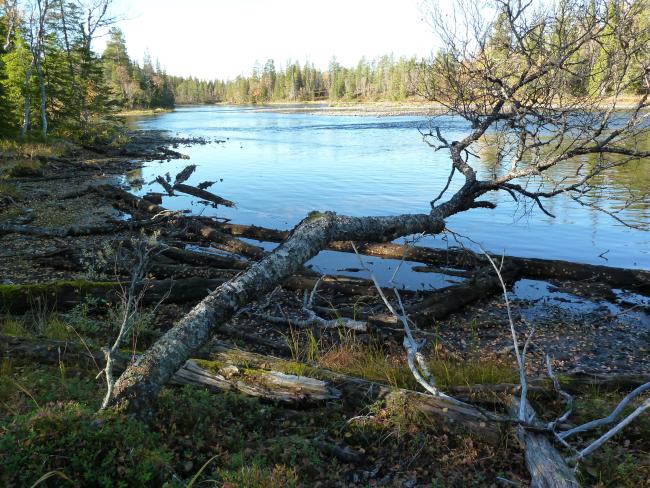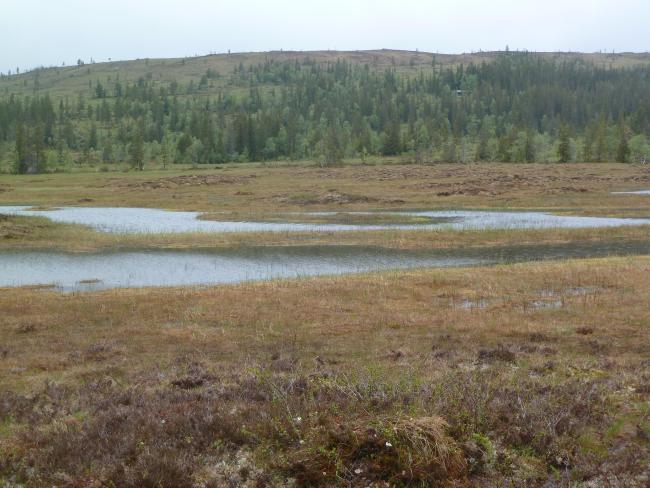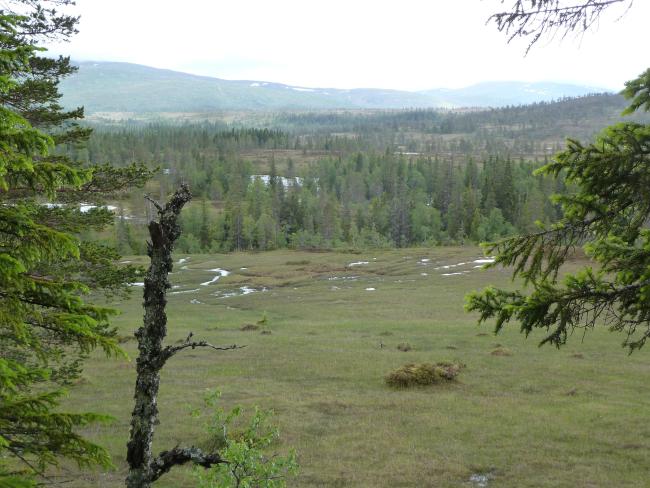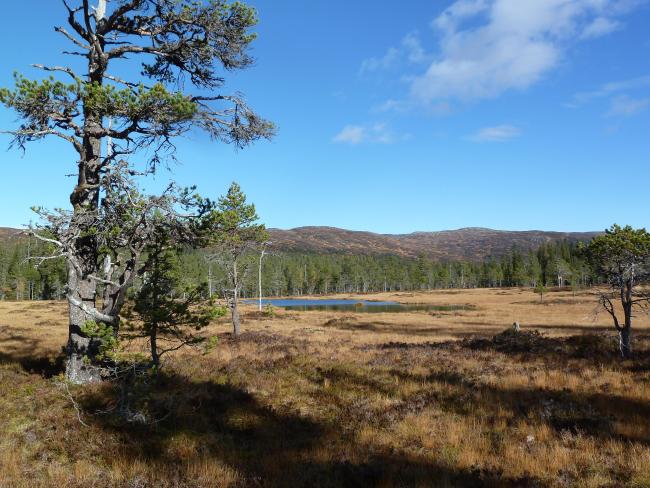Øvre Forra
Øvre Forra
- Country:
- Norway
- Site number:
- 1194
- Area:
- 10,254.0 ha
- Designation date:
- 06-08-2002
- Coordinates:
- 63°36'07"N 11°36'21"E
Carousel
CarouselMaterials presented on this website, particularly maps and territorial information, are as-is and as-available based on available data and do not imply the expression of any opinion whatsoever on the part of the Secretariat of the Ramsar Convention concerning the legal status of any country, territory, city or area, or of its authorities, or concerning the delimitation of its frontiers or boundaries.
The Site is a huge intact peat mire system at high elevation. It is partly forested, notably with Norway spruce (Picea abies) and interspersed with several smaller lakes and a meandering river. The landscape is undulating and there are also mires on sloping terrain due to the high precipitation, amid some drier areas and peaks. The river is protected against hydropower developments. The Site supports 130 different bird species, of which 70 are regular breeders. The most abundant birds are common greenshank (Tringa nebularia), common snipe (Gallinago gallinago) and whimbrel (Numenius phaeopus). More than 331 species of vascular plants and 370 species of fungi have been found in the area, some of them nationally threatened. The globally endangered freshwater pearl mussel (Margaritifera margaritifera) and the European otter (Lutra lutra) are also present. The area is valuable in terms of flood control and is used for grazing, hunting, fishing, recreational activities, and berry picking. Extensive research on a few fields have been conducted in the past: hydrology, limnology, climate, geology, flora and fauna.
- Nature Reserve - Øvre Forra
- NO1194RIS_2305_en.pdf
- NO1194RISformer2003.pdf
- NO1194RISformer_171108.pdf
- NO1194RISformer_220630_1803_en.pdf
- NO1194map.pdf
- NO1194_mgt171117.PDF




